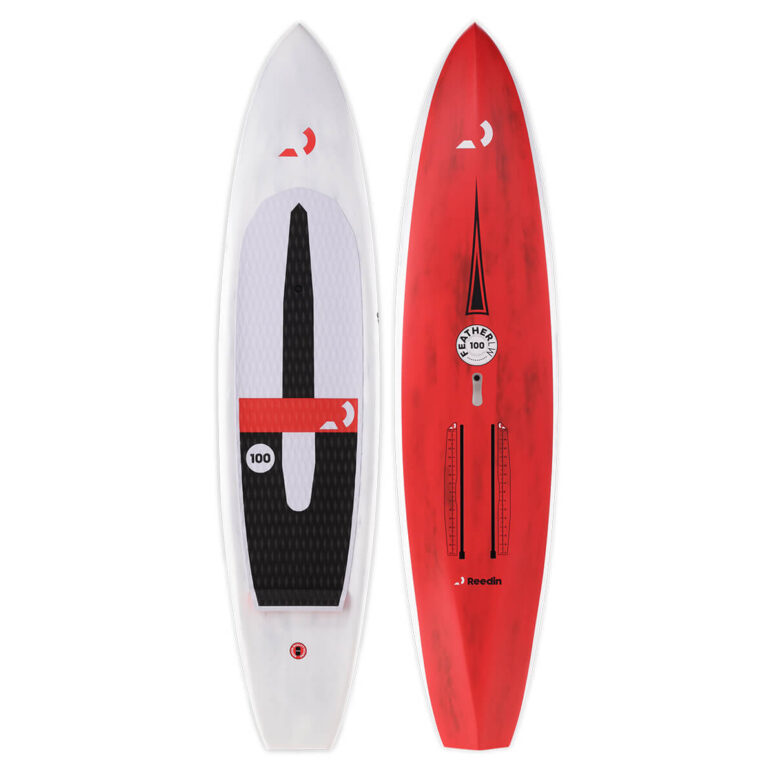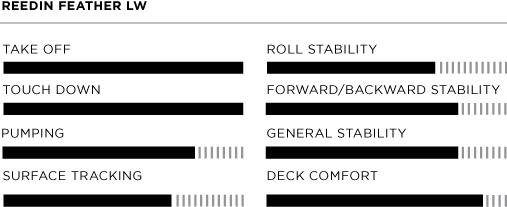

When you purchase gear through links on our site, we may earn a small commission. Here’s why you can trust our tests and our affiliate partner.

When we undertake the tough job of testing all this gear for you, it usually begins with an email informing us that the gear is en route for evaluation. Typically, we are aware of the brand and model, so we have a sense of what to expect and the conditions suited for the equipment. However, this time was different. The email simply stated, “pick up this board, it is a light wind wingfoil board”. We anticipated a boring, standard, large and high-volume board; nothing particularly exciting to be honest. The big surprise came when we saw the shape of the boardbag! As shown in the picture alongside this text, the Reedin Feather LW has an unconventional shape for a wingfoil board, which immediately piqued our interest…
Upon unzipping the boardbag and taking out the board, the first thing that struck us was its light weight relative to its size. Constructed with a full carbon fiber layup and a lightweight EPS core, the board weighs only 6.5kg. This design aims to achieve lift-off over the foil with minimal speed and effort, making it, on paper, the ideal board for light wind wingfoiling and downwind paddling.
Eager to test the board, we headed out for our first session in a dying 6-7 knots onshore wind, paired with a 7m wing and a 1100 foil. The first surprise came during the paddle out; unlike a typical wingfoil board or even a surfboard, it gained speed effortlessly, cutting through the water with minimal resistance. In no time, we were far enough along to attempt our first water start. The board's narrow profile and lack of footstraps made finding the right position tricky at first, but once up, it accelerated super quickly, allowing us to stabilize the whole setup and fly over the foil with barely any wing or board pumping.
While riding, we had to adjust our stance due to the board's narrow and elongated shape. After some fine-tuning, we managed to perform some silky smooth jibes, though mastering them took some time and crashes! Another advantage of this board is its behavior when slowing down and touching the water. Thanks to its sharp nose, it doesn't sink and it really maintains its speed, enabling quick transitions back onto the foil with minimal effort where most other boards would bog down and have you pumping your wing to get back up and running again.
There are two scenarios where this board excels: in marginal winds, you can use a big foil and wing to score sessions previously thought impossible; in normal winds, you can use a smaller wing and foil for enjoyable downwinder sessions. For both of these scenarios, the Feather LW will be a fantastic addition to your quiver, ensuring you won’t miss a single riding day, even in the lightest breezes.
So is it for you? Well, after testing the Reedin Feather LW in various conditions, we believe it’s suited for intermediate to advanced riders. For beginners, the narrow profile and technical positioning on the board, especially in choppy waters, could be quite challenging. Essentially, it’s ideal for those who already have experience with smaller more intermediate boards and are looking for a Formula 1 light wind machine for their quiver. If you have the skills then it’s the board to take your riding to the next level…
